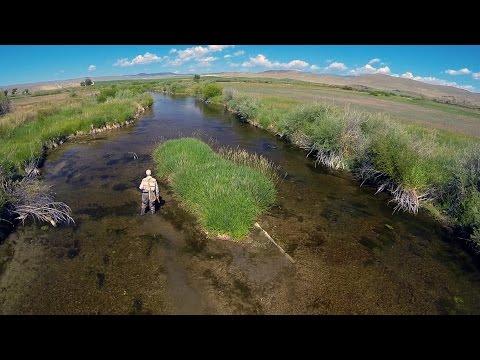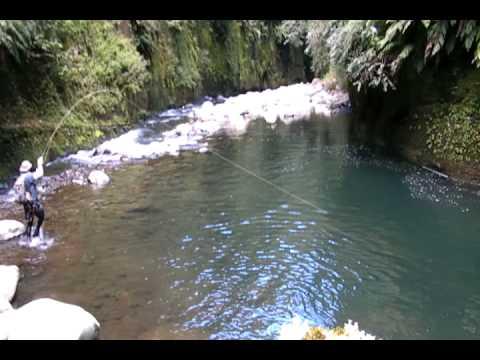This video explain how the internet travels across the ocean.
Although the internet is frequently perceived as a wireless, invisible power that unites people worldwide, it is actually far more tangible than we realize. It may surprise you to learn that over 99% of all internet traffic worldwide passes via a complex web of underwater cables that cross oceans and seas. These submerged cables, which span hundreds of thousands of miles, act as the world's data superhighways, tying together nations, continents, and people.
That being said, how precisely does the internet cross the wide ocean?
These undersea cables, feats of contemporary engineering, are laid to start the journey. Despite being roughly the size of a garden hose, they are made to be resistant to jagged rocks, high underwater pressures, and natural calamities like earthquakes. Every cable is made up of bundles of optical fibers that are covered in layers of copper, steel, and waterproof coatings. Utilizing light signals, the optical fibers—thinner than a human hair—transmit data. Information may now move at nearly the speed of light because to this.
Huge spools of cable and highly specialized ships are needed to lay these cables. Sometimes reaching depths of over 20,000 feet, these vessels carefully descend the wires to the ocean floor. The procedure is laborious, and cautious planning is required to stay clear of dangerous natural features like volcanoes or regions with active tectonic activity. The cables run from one continent to the next, crisscrossing the seafloor along paths designed for maximum efficiency and safety.
How Does Data Travel Through Fiber-Optic Cables?
Once the cables are installed, light does the true magic. Internet data is divided into packets, which include social networking posts, streaming services, emails, and videos. These packets are converted into light pulses, which pass over the optical cables. To make sure the signal doesn't deteriorate over long distances, a series of amplifiers spaced 40–60 miles apart are encountered by the light as it travels along the lines at breakneck speeds.
These amplifiers, powered by repeaters, enhance the light signal, ensuring it maintains its integrity while it speeds over oceans. The data may also pass through branching modules en route, enabling the cable to split off and serve several locations.
These cables eventually arrive at coastal landing points, where they are connected to networks on land. After the data arrives on land, it is sent via a number of servers, routers, and data centers before arriving at your device, which could be a laptop in Tokyo or a smartphone in New York. The data may have traveled millions of miles, but the entire process just takes a few microseconds.
Although they are a marvel of technology, underwater cables have a number of difficulties. Cable damage can result from landslides and underwater earthquakes, among other natural disasters. Unexpectedly, these cables have also been known to be bitten by sharks who mistake them for food. Businesses regularly inspect and fix cables to guard against these dangers and guarantee continuous connectivity.
Despite these issues, the system remains remarkably stable, and the world’s unquenchable demand for faster internet and more data means new cables are continually being built.
Thus, keep in mind that your data didn't merely fly through the air the next time you send a message, watch a movie, or surf the internet. Thanks to the amazing undersea cables that link every part of the planet, it moves at the speed of light through tiny glass fibers, under seas, and across continents. The worldwide internet is really powered by this invisible web that lies beneath the surface of the water.
0:00 Intro
1:07 Undersea Communication
2:03 Data Travel in Fiber Optics
3:27 Laydown of Submarine Cables
4:27 Cable Maintenance
5:29 Global Connectivity
6:32 Future of Submarine Cables
Although the internet is frequently perceived as a wireless, invisible power that unites people worldwide, it is actually far more tangible than we realize. It may surprise you to learn that over 99% of all internet traffic worldwide passes via a complex web of underwater cables that cross oceans and seas. These submerged cables, which span hundreds of thousands of miles, act as the world's data superhighways, tying together nations, continents, and people.
That being said, how precisely does the internet cross the wide ocean?
These undersea cables, feats of contemporary engineering, are laid to start the journey. Despite being roughly the size of a garden hose, they are made to be resistant to jagged rocks, high underwater pressures, and natural calamities like earthquakes. Every cable is made up of bundles of optical fibers that are covered in layers of copper, steel, and waterproof coatings. Utilizing light signals, the optical fibers—thinner than a human hair—transmit data. Information may now move at nearly the speed of light because to this.
Huge spools of cable and highly specialized ships are needed to lay these cables. Sometimes reaching depths of over 20,000 feet, these vessels carefully descend the wires to the ocean floor. The procedure is laborious, and cautious planning is required to stay clear of dangerous natural features like volcanoes or regions with active tectonic activity. The cables run from one continent to the next, crisscrossing the seafloor along paths designed for maximum efficiency and safety.
How Does Data Travel Through Fiber-Optic Cables?
Once the cables are installed, light does the true magic. Internet data is divided into packets, which include social networking posts, streaming services, emails, and videos. These packets are converted into light pulses, which pass over the optical cables. To make sure the signal doesn't deteriorate over long distances, a series of amplifiers spaced 40–60 miles apart are encountered by the light as it travels along the lines at breakneck speeds.
These amplifiers, powered by repeaters, enhance the light signal, ensuring it maintains its integrity while it speeds over oceans. The data may also pass through branching modules en route, enabling the cable to split off and serve several locations.
These cables eventually arrive at coastal landing points, where they are connected to networks on land. After the data arrives on land, it is sent via a number of servers, routers, and data centers before arriving at your device, which could be a laptop in Tokyo or a smartphone in New York. The data may have traveled millions of miles, but the entire process just takes a few microseconds.
Although they are a marvel of technology, underwater cables have a number of difficulties. Cable damage can result from landslides and underwater earthquakes, among other natural disasters. Unexpectedly, these cables have also been known to be bitten by sharks who mistake them for food. Businesses regularly inspect and fix cables to guard against these dangers and guarantee continuous connectivity.
Despite these issues, the system remains remarkably stable, and the world’s unquenchable demand for faster internet and more data means new cables are continually being built.
Thus, keep in mind that your data didn't merely fly through the air the next time you send a message, watch a movie, or surf the internet. Thanks to the amazing undersea cables that link every part of the planet, it moves at the speed of light through tiny glass fibers, under seas, and across continents. The worldwide internet is really powered by this invisible web that lies beneath the surface of the water.
0:00 Intro
1:07 Undersea Communication
2:03 Data Travel in Fiber Optics
3:27 Laydown of Submarine Cables
4:27 Cable Maintenance
5:29 Global Connectivity
6:32 Future of Submarine Cables
- Category
- Fly Fishing
- Tags
- The Perspective, Perspective, Perspectivevideos




